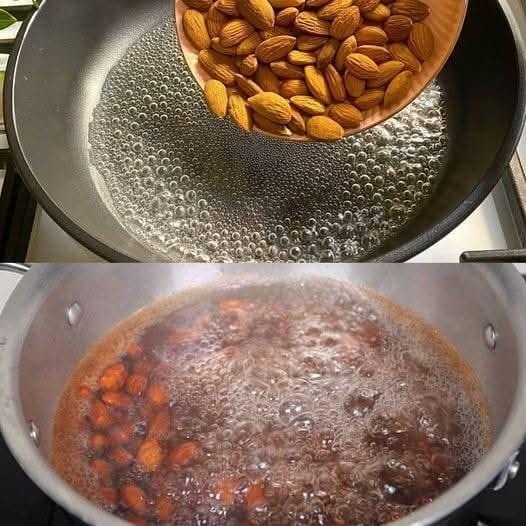ADVERTISEMENT
Boil Water: Fill a pot with water and bring it to a rolling boil.
Prepare Almonds: Add raw almonds to the boiling water, ensuring they are fully submerged.
Timing is Key: Let the almonds boil for just 60 seconds. Be careful not to overcook them, as it can affect both their texture and flavor.
Cooling: Drain the hot water immediately and rinse the almonds under cold water. This halts the cooking process and cools them down, making them easier to handle.
Peeling: Once cooled, gently squeeze an almond between your thumb and forefinger. The skin should easily slide off.
Drying: After peeling, place the almonds on a clean kitchen towel or paper towel to remove any excess moisture.
Blanched almonds are incredibly versatile and can be used in a variety of culinary applications:
Baking and Confections: Add blanched almonds to recipes for cakes, cookies, and other desserts where a smooth texture is desired.
Almond Flour/Meal: Grind blanched almonds to make your own almond flour or meal, which is a fantastic gluten-free alternative for baking.
Snacking and Garnishing: Enjoy blanched almonds as a nutritious snack on their own, or chop them up and sprinkle them over salads, yogurt, or oatmeal for an added crunch and burst of nutrition.
Blanching almonds may be a simple technique, but its impact on flavor and versatility is undeniable. By incorporating blanched almonds into your cooking and baking, you’ll unlock a world of culinary possibilities. So go ahead, give it a try, and elevate your recipes with the magic of blanched almonds!
ADVERTISEMENT
